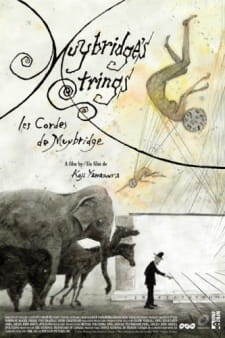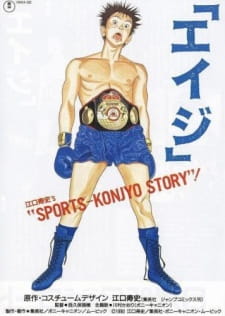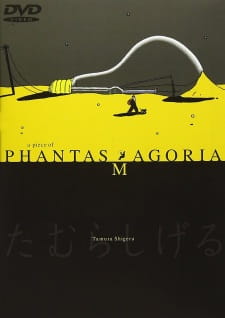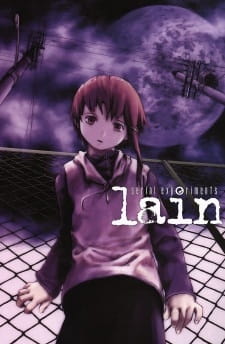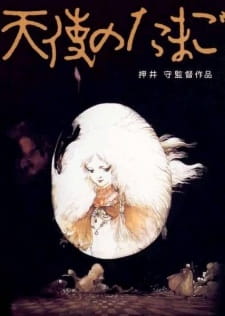Dec 27, 2022
It's easy to start this Yamamura animation with half-shut eyes, viewed timidly through the cracks of one's palms covering the face, just as a mother might do with a child while watching an R-rated film, as stepping into what looks like a commissioned biopic/historical piece on Eadweard Muybridge could be a bone-dry subject and fall into the routine trappings of a not-very-artistic documentary with sleep-inducing NPR narrators, but that's fortunately not the case, and this is filled to the brim with Yamamura's usual artistic direction, visual storytelling, and animation.
Photographic history is mostly of interest as a subset of technological development, from the antiquated large
...
format cameras and laborious wet-plate processing techniques, to what eventually led to the birth of cinema, as well as animation. Muybridge is perhaps the most important early story there is to be told that has some degree of narrative interest, for most of what transpired before him was of a purely technical nature, such as Johann Zahn, Nicéphore Niépce, William Henry Fox Talbot, and the inventions and improvements of processes from various others (Louis Le Prince also has a fascinating story but that's probably better left to someone along the lines of Hitchcock). Muybridge, instead of being most known for studio portraiture, or the more adventurous and difficult landscape photography (though he engaged in this), attempted a more scientific application of photographic equipment—a study of motion, and his sequential technique and patents were obviously an influence on motion-picture projection.
It's probably best to do a little bit of reading on Eadweard Muybridge before watching the short, because while this crosses the lines between semi-documentary, semi-biopic, and artistic animation, there's not a lot of context given. Everything made perfect sense to me because of my prior awareness of Muybridge; I'm not sure how digestible it would be for the uninitiated. All we're directly given via text is that Muybridge (1830-1904) was "One of the most important figures in the development of the motion picture. His invention, the Zoopraxiscope [1880; this is a predecessor of the movie projector, and the device is juxtaposed with Muybridge's revolver], projected moving drawings created from sequential photographs of animals and humans in movement." We're also presented with several images of Muybridge's photographic plates, and we're given various dates as we jump around in history.
For the basic story details of Muybridge, he married his wife, she had a number of affairs, and Muybridge murdered one of her lovers with a revolver. He was acquitted on the grounds of the act being a "justifiable homicide." The main disappointment here is that Muybridge didn't apply his technique to the murder! "Let me introduce you to the great Eadweard Muybridge, the pioneering snuff film director."
As for the photography, Muybridge experimented in various ways, but he's most known for his chronophotography of animal locomotion from 1878 to 1886. His most famous is the galloping sequence of a horse, and many people have probably seen these images somewhere without realizing Muybridge's involvement.
His studies allowed for the photographic breakdown of motion that was either difficult or unable to be perceived by the human eye, and that's why the sequence of horse photos was so important. Paintings of horses prior to precise photographic references of this kind, often depicted the horse's gait improperly. He would have to utilize faster camera shutters and more sensitive photographic emulsion to properly capture his images.
Yamamura uses a very expressive and symbolic style of animation, and many strings are severed in the process—as in the name Muybridge's Strings. These "strings" were wires that were pulled by the horse (or other animal) in locomotion, and the wire would then trigger the shutter of the camera, and by setting up dozens of cameras with wires attached, a photographic sequence of locomotion could be recorded. Then these sequences of images could be projected onto a screen to produce what was effectively a motion-picture, and so it's obvious how important Muybridge was to subsequent cinematography and animation.
Instead of switching between Muybridge's personal and professional life alone, we're also presented with many highly abstract and surreal scenes, the relationship between a mother and her child, and even one scene that I believe was meant to be a reference to the Noah's Ark story, effectively connecting all of history and every small and big event to the same indefatigable stride of time—just made a little more relatable via the "strings," and alongside this more relevant symbol, there are also numbers, clocks, representations of infinity, etc. Though we're occasionally presented with more tangible film editing and narrative, the bulk of the animation is depicted with numerous transitions of scenes and frequent transformations into altogether new scenes that perfectly match the ephemeral nature of time, depicted in a non-linear and poetic fashion.
Reviewer’s Rating: 9
What did you think of this review?
Nice
 0
0
Love it
 0
0
Funny
 0
0
Confusing
 0
0
Well-written
 0
0
Creative
 0
0Show all
